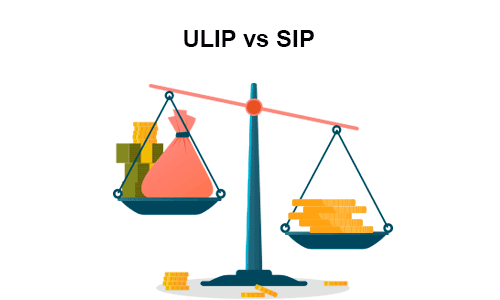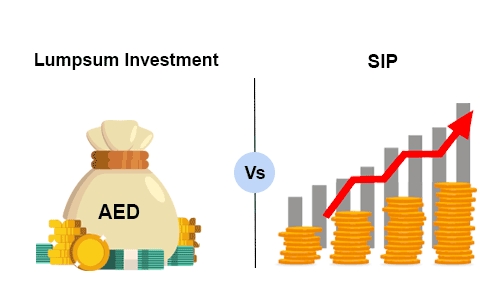Mutual Fund Calculator India
In 2023, mutual funds have gained significant popularity in India. Many individuals are gravitating towards them due to their crucial role in wealth growth. Before diving into this investment, however, it's crucial to anticipate the potential returns.
That's where the mutual fund calculator steps in. Using this tool, you can obtain an estimated capital gain and the projected maturity amount from your investments.
Table of Content
In this article, we will explore how this calculator works, its benefits, and how you can use it effectively.
What is a Mutual Fund Calculator?
A mutual fund calculator provides you with an estimate of how much you can earn from your mutual fund investments. It's like a preview of your investment's future. If you're investing a one-time big amount, or using the SIP (Systematic investment plan) way, this tool can help.
The most notable advantage of a mutual fund calculator is that you can see your investment's value at the end of your chosen period with it. This way, you can plan better, know your future finances, and reach your money goals.
Key Features and Benefits of Mutual Fund Calculator
Here are some of the striking features and benefits of a mutual fund calculator –
- Choosing Between Lump Sum and SIP: When you invest in mutual funds, you have two options — lump sum or SIP. A lump sum simply means you invest a big amount at one time. SIP, or systematic investment plan, means you invest a small amount regularly (like every month). You can use a mutual funds calculator, compute the maturity amount, and select the option as per your requirements.
- Predicting Your Maturity Amount: A mutual fund calculator indeed helps you see the future! You can guess how much money you'll have when your investment matures. Just enter some details, and the calculator will show your future amount.
- Comparing Different Investment Returns: If you are not sure which investment is best, you can use the calculator to compare returns from different investments. This way, you can pick the one that gives you the most money back.
- Planning Your Investments Made Simple: Mutual funds have made the investment process easy. You can plan your investments better and be more sure of your financial future.
- Setting Clear Financial Goals: With this calculator, you can set clear money goals. You'll know how much to invest and for how long to reach your dreams.
- Understanding Risks and Returns: Every investment has risks. This calculator can help you understand these risks — by looking at different rates of return, you will know what to expect.
- Track Your Investment Growth: Keep an eye on how your money grows over time. The calculator lets you see the growth of your investment, helping you stay motivated.
- Prepare for Future Expenses: Whether it's a dream vacation or your child's education, you can prepare now and have sufficient funds in the future. The calculator shows you how much you need to invest today to meet those future needs.
How Does a Mutual Fund Calculator Work?
A mutual fund return calculator is a handy tool that helps you estimate the return on your mutual fund investments. Whether you put in a big amount all at once (lump sum) or invest a bit every month (SIP), this tool has got your back.
Let's see how this tool works -
Simple Steps for Big Results
Using the calculator is like counting 1-2-3.
- First, decide how you're investing — is it a one-time amount (lump sum) or regular amounts every month (SIP)?
Put that amount in.
- Next, tell the calculator how long you plan to keep your money invested. This is your investment period.
- Lastly, pick your investment strategy. It's how you think your money will grow.
Picking Your Investment Strategy
Here's where you get options -
- Aggressive: This means you're taking a bit of a risk, hoping for a higher return. Generally, the calculator guesses a 12% return for this.
- Conservative: You're playing it safe, expecting less return. The calculator guesses approx. 6% return here.
- Balanced: A middle ground between the two. Generally, the calculator goes with an 8% return.
- Customised: You can put in whatever return rate you think is right.
Let’s understand the operation of a mutual funds calculator with an example -
Let's say you're investing ₹1,000 every month (SIP) for 5 years. You choose the 'Balanced' strategy, hoping for an 8% return.
After putting in these details, the calculator quickly tells you what you might have at the end of 5 years. It will split the result into two parts:
- The money you put in (₹1,000 x 12 months x 5 years = ₹60,000).
- The extra money you earned (the gains).
This way, you get a clear picture of your investment's growth.
Difference Between Mutual Fund Calculator and SIP Calculator
A mutual fund calculator gives you an idea of how much you can earn from your mutual fund investments over time. It takes into account various factors like the amount you invest, the duration of your investment, and the expected rate of return. If you are making a one-time investment or choose to invest over several periods, the mutual funds return calculator is of help.
On the other hand, an SIP calculator focuses specifically on Systematic Investment Plans (SIPs). SIP is a mode of investment when you invest a fixed amount regularly, like monthly, in a mutual fund.
An SIP calculator helps you find out the future value of these regular investments. You plug in details like how much you're investing each time, how often, for how many years, and the expected rate of return. This calculator then shows the compound growth of your SIP investments, helping you see the power of regular savings.
Scroll down to the next section to see what others have been asking about mutual funds calculator –
Frequently Asked Questions
Ans: A mutual fund calculator is a tool that helps investors estimate the returns that they might get from their mutual fund investments. By entering details like the investment amount, duration, and expected rate of return, the calculator provides a projected maturity amount.
Ans: While both tools provide estimates for investment returns, a mutual fund calculator can be used for both lump sum and multiple-period investments. An SIP (Systematic Investment Plan) calculator, however, is specifically designed for regular investments, like monthly contributions.
Ans: The results from a mutual fund calculator give a ballpark figure based on your entered data and the expected rate of return. Real-world market conditions, fund performance, and other factors can affect actual returns, so it's best to use the calculator for planning and not as a guaranteed outcome.
Ans: You can use the calculator whenever you plan to make a new investment or review your current investment strategy. It's especially helpful when setting financial goals or adjusting your investment amounts.
Ans: Most mutual fund calculators online, especially on financial advisory and mutual fund websites, are free to use. They are provided as a tool to help investors make informed decisions.
Ans: Yes, the mutual fund calculator India is designed to estimate returns for various types of mutual funds — from equity and debt to hybrid funds. However, it's crucial to enter an appropriate expected rate of return, which might differ based on the type of fund.

More From Investment
- Recents Articles
- Popular Articles







.jpg)











.jpg)
.jpg)

















